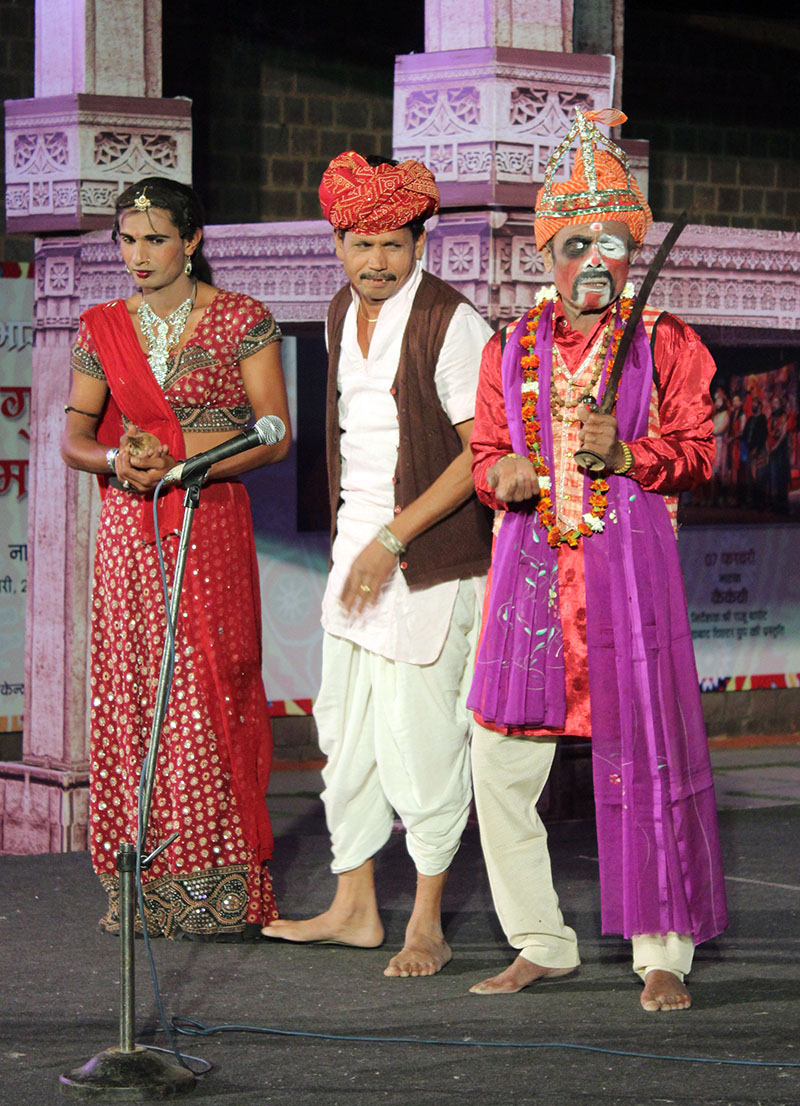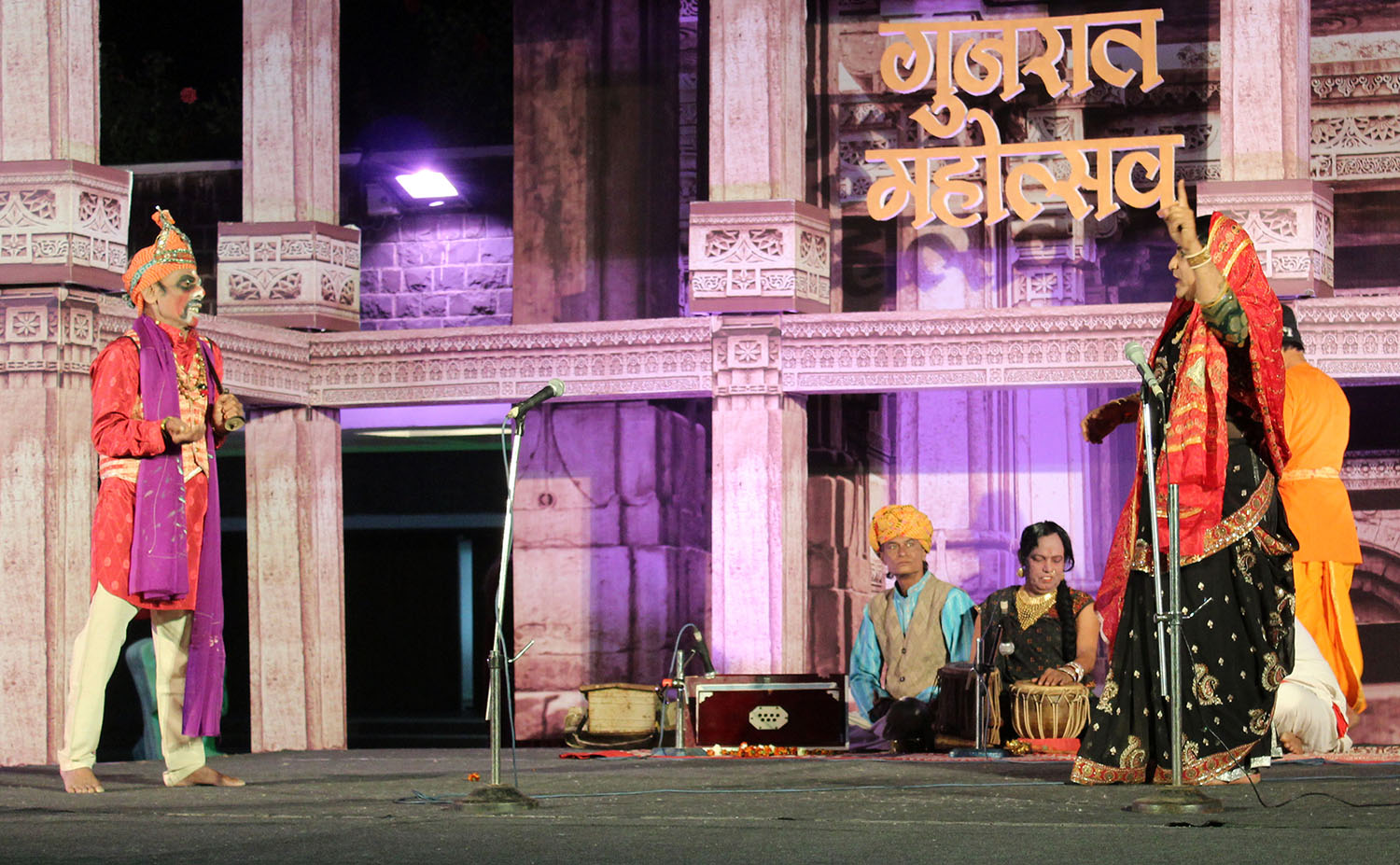A form of folk theatre with musical and dance elements, Bhavai is predominantly performed in the state of Gujarat. They are performed by men from the Bhavaiyya community of Gujarat, also known as the Vyas or Naik community.
The word bhavai is derived from the Sanskrit words bhava, meaning “emotion”, and vahini, meaning a carrier or vehicle. The Bhavaiyyas trace the origins of the form to a myth dating from the fourteenth century. Asait Thakar, a Brahmin priest, is said to have rescued the daughter of a village headman. To do so, he supposedly sang and danced for her captors and dined with her in defiance of stringent caste-based norms, leading to his being ostracised by the Brahmin community. He is later believed to have composed several satirical skits on social issues using elements from existing performative traditions, leading to the development of Bhavai. The Bhavaiyyas today believe themselves to be descendants of Thakar, with the performers largely belonging to the Targala caste. The performing community is also associated with shakti worship, especially at the temples of the goddess Bahuchara, considered to be the Bhavaiyyas’ patron goddess.
Bhavai performances consist of several small skits or vesha, composed in a mixture of Gujarati, Urdu-Hindi and Marwadi. The skits are interspersed with musical interludes, suggestive song and dance, and bawdy humour. A male jester and narrator called the ranglo accompanies the action with clownish antics and humorous commentary, sometimes accompanied by a female counterpart or rangli. The nayak or leader of the bhavai troupe acts as a sutradhar for all the veshas.
About 360 veshas have been recognized by scholars as a part of the Bhavai repertoire. The oldest known vesha, Ramdev, is attributed to Asait Thakar and depicts the story of creation of the world. Veshas may be grouped into three broad categories. Historical veshas depict stories borrowed from local histories and events, with skits such as Jasma Odan, Jhuthan and Zanda Zulan. Social veshas are satirical social commentaries, with skits such as Purabiyo, Saraniyo and Vanzara. Mythological veshas feature characters and events from epics and Puranic literature, such as Ardhanarishvara and Ganesha. Other skits may feature displays of physical skill by members of bhavai troupes.
Bhavai performances are accompanied by instrumental and vocal music. Instruments such as the bhungal (a thin, horn-like copper instrument), kansijoda (hand cymbals), jhaanjh , tabla, harmonium and sarangi are used, although the popularity of the bhungal has decreased over the years. The musical structure of bhavai consists of six basic rhythms, each suited to a specific mood. Bhavai dances are related to other popular forms, particularly kathak.
Bhavai troupes typically consist of twelve to fifteen members, who travel from village to village performing for eight months a year. The troupe visits a village after a prior consultation with the village head, gathering information about the local events to help determine the veshas they will perform. They stay in the village for about two to three days, receiving gifts and food from a patron’s family as well as other villagers.
A central area within the village is cordoned off for the performance. Performances typically take place at night, with preparations for makeup and costuming beginning after lunch. The actors may use multani mitti (a mud face mask) to whiten their faces, and soot to highlight their eyes. The performers portraying women dress in ghaghra choli and saris, with jewellery and decoration attached to their hair. The male characters wear dhotis and Kathiawadi jamas. As the performers get ready, the musicians of the troupe gather in the performance area and play music to attract an audience.








